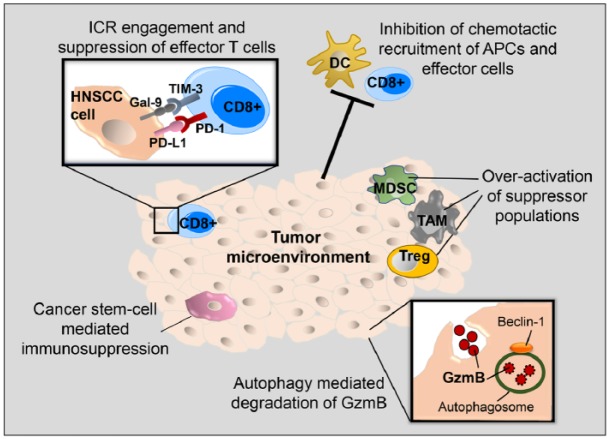Figure 1.
Immune escape mechanisms in head and neck squamous cell carcinoma (HNSCC). Five mechanisms contribute to the immunosuppressive tumor microenvironment in HNSCC. 1) The engagement of immune checkpoint receptors (ICRs), such as PD-1 and TIM-3, with their ligands results in suppression of effector T-cell function. 2) Reduced chemokine production inhibits the recruitment of antigen-presenting cells (APCs) and effector T cells to the tumor. 3) The overactivation of immune suppressor populations, such as myeloid-derived suppressor cells (MDSCs), tumor-associated macrophages (TAMs), and regulatory T cells (Tregs), leads to a hostile tumor microenvironment. 4) Beclin 1 facilitates autophagosome formation, resulting in autophagy, which enhances the turnover of endocytosed granzyme B (GzmB). 5) Cancer stem cells in HNSCC marked by CD44 expression have increased PD-L1 expression, resulting in T-cell exhaustion.

